How can I control my diabetes?
How can I control my diabetes? 
Diabetes is very harmful, diabetes in the early stages, most people, no feeling, they feel fine, but after the blood sugar rise, it will lead to vascular damage throughout the body, over time, it will cause endothelial inflammatory response, causing atherosclerosis; it will lead to coronary artery disease, angina pectoris, myocardial infarction, carotid artery stenosis, diabetic nephropathy, renal failure, diabetic foot, diabetic eye disease, and so on, irreversible and malignant results.
I am a cardiovascular physician, and 1/3 of the patients with myocardial infarction or severe coronary artery disease that I encounter have comorbid diabetes. And these people's blood vessels, compared to the coronary heart disease patients without diabetes is significantly worse, diabetic patients caused by vascular damage, often diffuse, that is, diabetes caused by vascular disease, often do not apply to a lesion, but more than one lesion, for severe stenosis of coronary artery disease, even can not be stented, are required to bypass grafting treatment.
So diabetics, what can you do to better control your blood sugar?
I. Healthy living is necessary to control blood sugar

When you have diabetes, you have to take hypoglycemic drugs or insulin, that's right. But for people with diabetes, medication is not the only way to control blood sugar, and healthy living is necessary to control blood sugar. In particular, a healthy diet and proper exercise are especially important for controlling blood sugar.
Among all chronic diseases, diabetes is relatively more rigorous requirements for the patient's diet, there are many diabetic friends, and know, usually how to eat. Eating incorrectly and inappropriately and unscientifically can really lead to elevated blood sugar.
The two most commonly used concepts today are: glycemic index GI and glycemic load GL
High GI foods, digested quickly and absorbed, release glucose quickly and blood sugar rises high;
Low GI foods, slow digestion, low absorption, slow glucose release, lower blood sugar.
I diabetics choose foods with low GI as much as possible, and foods with low GI in our daily life mainly focus on mixed grains and vegetables. (GI > 70: high GI food; 55 < GI < 70: medium GI food; GI < 55: low GI food)
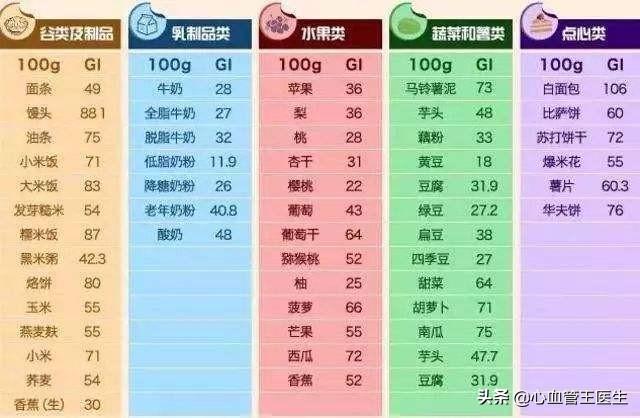
The Diabetes Association recommends intermittent light physical activity for sedentary people, people at high risk for diabetes, people who sit for long periods of time and spend 5 minutes walking or standing have benefits, and even more so if they persist in exercising to prevent diabetes, low-intensity physical activity increases insulin sensitivity, and the effect becomes more pronounced as the duration of the exercise is prolonged and the intensity of the exercise is increased.
Guidelines recommend that people with diabetes should receive exercises that include aerobic and impedance exercises to improve insulin metabolism and reduce all-cause and cardiovascular deaths. That is, in order to prevent diabetes or control blood glucose, we should stick to aerobic exercise with some strength-based exercises. When the glycemic load is <10, it is low glycemic load food; when the glycemic load is 11-19, it is medium glycemic load food; when the glycemic load is >20, it is high glycemic load food. Simply put, when diabetics choose food, not only should they choose relatively low GI, at the same time, it is not that high GI can't be eaten, but the amount should be controlled. So diabetic patients choose food, on the one hand, to choose a small impact on blood glucose, on the one hand, to control the amount.
It is also necessary to pay attention to some dietary details: simple processing, light taste, slow down the pace of eating, first drink clear soup, then eat vegetables, staple food, meat eat slowly.

In addition to diabetes science diet, exercise is also very important, research shows: adherence to proper exercise can reduce the risk of type 2 diabetes by 25% to 40%. The Diabetes Association suggests that adherence to exercise can prevent the onset of diabetes; diabetes guidelines recommend that in order to prevent diabetes or control blood glucose, aerobic exercise should be adhered to, along with some strength-based exercises.
Specifically, 3-5 times a week, more than 30 minutes each time, to run, cycling, jumping exercise, swimming, climbing and so on, appropriate occasionally add a little exercise muscle training.
Only a healthy diet, combined with proper exercise, can lead to better blood sugar control.
Second, formal treatment is the key to controlling blood sugar
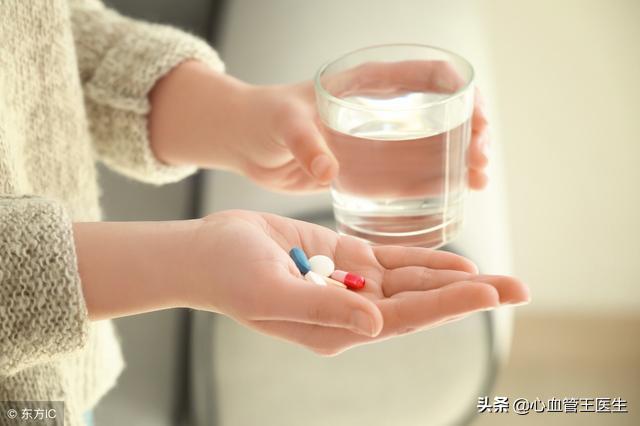
For the vast majority of people with diabetes, medication is required and long-term medication is needed to control it. Medications are supposed to be something that professionals do, and there are many different types of hypoglycemic medications that will be chosen for different patients, depending on the patient.
For specific medications, it is not appropriate to go into details today, just follow your endocrinologist's instructions.
We are sharing today about insulin and oral medications for lowering sugar. There are a lot of people who have misconceptions about insulin. Some people think that once insulin is used, you have to take it all the time and you can't stop, so some people are hesitant to use insulin.
1, for drugs can not control diabetes, or diabetes critical complications appear, this time if you do not use insulin, what else can be done? Do not just stare at the blood sugar continues to rise, watching the risk gradually approaching? This is the time to use insulin still have to use.
2, not insulin used, can not stop, with the stabilization of blood glucose, appropriate time, you can change the insulin again to sugar-lowering oral drugs, rather than that the use of insulin will have to be a lifetime.
Third, monitoring blood glucose is the basis for controlling blood glucose
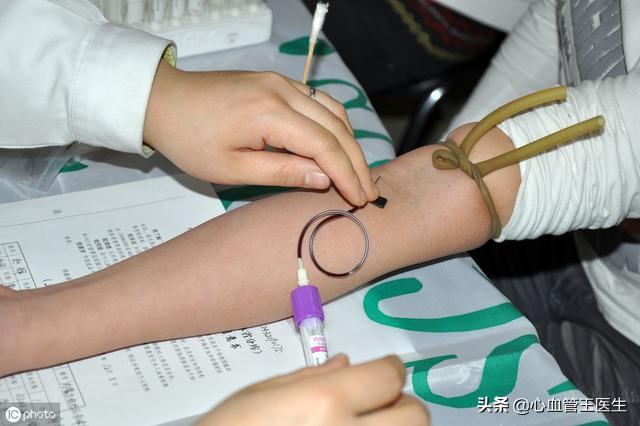
To control blood pressure, we appear to understand what blood sugar is, right? The vast majority of diabetes has no sensation, we can not rely on feeling to determine the blood sugar high and low, we can only rely on monitoring, at home to measure fasting blood glucose as well as postprandial blood glucose.
1. Fasting blood glucose: 3.9~6.4mmol/L;
2. Post-prandial blood glucose: no greater than 7.8 mmol/L after 2 hours and should return to fasting blood glucose level after 3 hours.
3. Random blood glucose: <11.1 mmol/L;
In addition to achieving fasting and postprandial blood glucose as much as possible, we need to go to the hospital regularly to have blood drawn to monitor glycated hemoglobin:
Glycated hemoglobin is a useful indicator of how well a diabetic patient has controlled his or her blood glucose over the past 1 to 2 months. The reference value for normal glycated hemoglobin measurement is: 4% to 6%.
In conclusion, we have to pay attention to blood glucose, to control blood glucose, first of all, to monitor blood glucose, at the same time to adhere to long-term healthy diet and appropriate exercise, and under the guidance of the doctor to take medication or injection of insulin on a regular basis!
How can I control my diabetes? This is the most simple thought of many ordinary people. Today, Dr. Zhang is going to talk to you about this topic in the words of our common people.
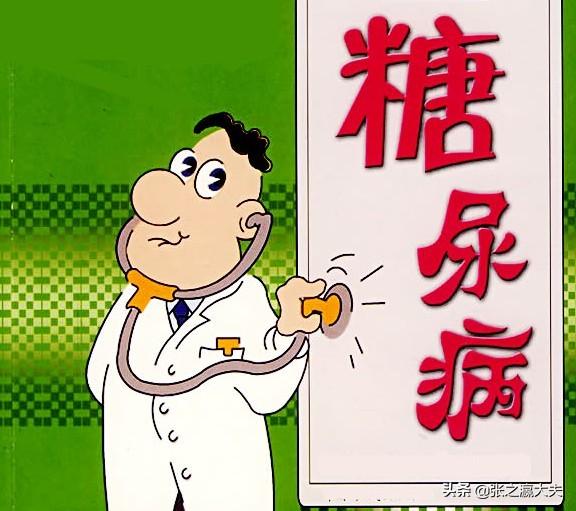
Diabetes mellitus, as the name suggests, is a group of metabolic disorders characterized by chronic elevated glucose levels. The high blood glucose in the disease diabetes is mostly brought about by defective insulin secretion and defective insulin action. Chronic uncontrolled diabetes may damage many systems, especially the heart, brain, kidneys, eyes and other important organs may be damaged as a result. Therefore, we can say that we hate and fear diabetes, so we must control it properly.
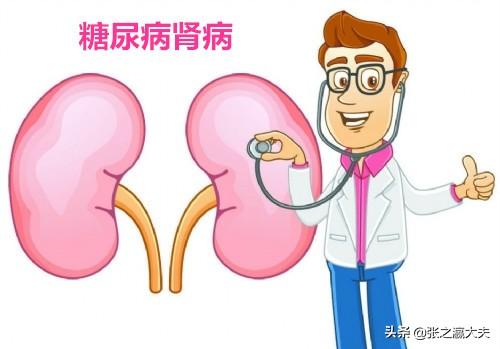
And when it comes to diabetes control, we are now talking about 3 levels of prevention and treatment at all levels of health care. Primary prevention refers to the prevention of diabetes in patients who do not develop diabetes. Secondary prevention refers to the early detection and treatment of diabetes. Tertiary treatment means taking care to delay the onset of diabetes complications. Doing these points generally advocates that people do not smoke, drink less alcohol, eat less sugar, salt and oil, pay attention to increase exercise and control weight reasonably. And in these improvements in lifestyle outside the treatment, for many people preferred metformin, in recent years more and more good glucose-lowering drugs, such as dagliflozin, engliflozin, cagliflozin, liraglutide, and other drugs is also a very good choice. However, the use of hypoglycemic drugs must be under the guidance of a professional doctor, do not adjust the hypoglycemic drugs on your own to avoid accidents.
In short, for the majority of diabetic patients, no matter what must control blood glucose standard, do not let the blood glucose high, do not let the blood glucose huge fluctuations, blood glucose stable, heart, brain, kidney and other important organs harm is small. What do you think?
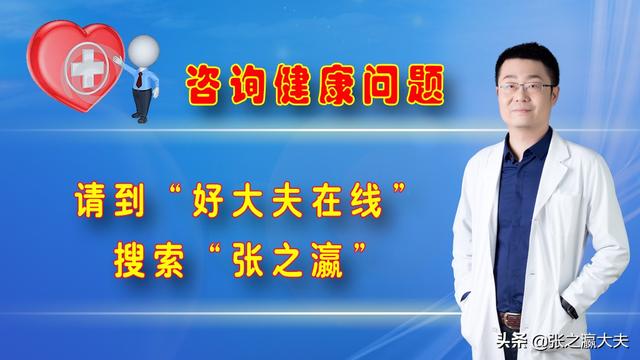
Diabetes is a chronic disease, and the worst thing about it is that it can easily lead to complications. Therefore, good blood glucose control is especially critical to slow down the onset and progression of diabetes complications. The most important thing to control diabetes is to control blood glucose, to do a good job of "five carriages", that is, diet control, blood glucose monitoring, moderate exercise, drug control and diabetes education. I have seen a clinical case of elderly patients, alone at home, the old partner has died, children in the field busy at work, the old man has never gone to a formal hospital to diagnose diabetes and accept the formal treatment of diabetes, hearsay has been relying on the use of so and so health care products to lower blood sugar, but also did not have a daily monitoring of blood glucose, the patient's body itchy skin at that time, because of blurred vision in both eyes in the ophthalmology department, and found that diabetic retinopathy It was found that the diabetic retinopathy had entered the proliferative stage and required hospitalization. After admission to the hospital blood glucose monitoring results show that the blood glucose 15-20 mmol / L, high, the patient realized that the original convinced that a certain health care products do not play a role in lowering the effect of glucose, and then after the diabetes education, so that the patient to recognize diabetes, teach patients how to use insulin, how to monitor blood glucose, how to moderate exercise, dietary precautions, etc., the patient began to accept the formal drug therapy and the corresponding Ophthalmologic treatment, the condition improved and was discharged from the hospital, fortunately retained a little vision, not completely blind. Here, moderate exercise means more than half an hour of exercise a day, at least five times a week, the intensity of exercise should be moderate, that is, when you exercise you can still carry on normal verbal exchanges with other people, without panting. The purpose of blood glucose monitoring is to evaluate the effectiveness and safety of diabetes treatment, meaning that you take a glucose-lowering medication that not only lowers your blood glucose to the normal range but also does not cause hypoglycemia or other significant discomfort. Dietary control, simply put, can not eat and drink, low-salt, low-fat, low-sugar diet, can not eat whatever you want to eat, and should be timed and quantitative. In addition, maintain a good mood, insomnia, grumpy, excited, angry, etc. will cause rapid increase in blood sugar.
bibliography
[1] Chinese Medical Association Diabetes Branch. Guidelines for the prevention and treatment of type 2 diabetes mellitus in China (2013 edition)[J]. Chinese Journal of Endocrinology and Metabolism, 2014, 30(10):26-89.
The authoritative interpretation of Pharmaceutical Affairs, unauthorized reproduction, plagiarism will be punished.
First of all, what is diabetes?.. Diabetes mellitus is a condition of elevated blood glucose caused by a relative deficiency, or absolute deficiency, of insulin secretion in the body. Mainly elevated blood glucose, some show the typical symptoms of diabetes, three more (drink more, urinate more, eat more) and one less (weight loss) and other symptoms. Many of the diabetics found nowadays are not obvious.
Diabetes control is now about 5 things.1. Diabetic patient educationThe patient is made aware of the dangers of diabetes. Make patients realize the harm of diabetes, know how to treat it through diet, know how to exercise, can not exercise. Know how to take diabetes medication, or how to apply insulin, how to use rapid glucose meter, etc., a series of knowledge related to diabetes prevention and treatment. Patients exercise through the knowledge learned from the doctor, to guide the diet and medication.
2. Dietary treatment.. It is best to know how to eat for diabetics, and it is best to know through your doctor, to develop a diet program, follow it, and follow it.3. Exercise therapy. Ask your doctor if you can do exercise therapy, and if so, your doctor develops an exercise program for exercise therapy.4. Treatment of diabetes medication. Based on the above diagnosis, the doctor prescribes medication to treat the patient's condition and the patient has to take the medication on time.5. Checking of blood sugar.. Be sure to check your blood glucose on your medications, and check your blood glucose regularly according to the above.
By eating a 5-pronged diet, you can control the progression of diabetes and prevent complications.
Diabetes mellitus is a common and prevalent metabolic disease that is determined by:
1. Diabetes symptom "three more and one less (i.e., more drinking, more eating, more urinating, and less weight)" + anytimePlasma glucoseLevels ≥11.1 mmol/L (200 mg/dl).
2. Fasting plasma glucose (FPG) level ≥ 7.0 mmol/L (126 mg/dl)
3. 2-hour PG level ≥ 11.1 mmol/L (200 ng/dl) in OGTT test
A diagnosis of diabetes is made when any one of the above is met.
Although the pathogenesis of diabetes is still unclear and a cure cannot be achieved, we can still achieve blood sugar control through a range of methods:
I. Nutritional therapy:
1. Reasonable control of energy intake to achieve ideal body weight.
2, control the proportion of carbohydrates in the total energy: the proportion of 50% - 60% is appropriate, up to 70%, and need to pay attention to the intake of added sugar is also included in this range.
3. Limit the intake of cholesterol and avoid foods high in cholesterol, such as animal brains, intestines and offal.
4, appropriate amount of protein, dietary protein intake is equivalent to normal people, but 1/3 for the better quality protein, such as fish, lean meat, soy products, milk and so on.
5. Supplement sufficient green vegetables to ensure a source of vitamins and dietary fiber.
6. Reasonably adjust the frequency and duration of meals, and appropriately increase the frequency of meals (on the basis of the total energy remains unchanged, divided into several times).
7, adjust the order of eating: first eat green vegetables and protein foods, and then eat staple foods, in order to reduce the speed of digestion and absorption of food, slowing down the rate of postprandial blood sugar rise.
II. Exercise therapy: Increase exercise, strengthen muscles, control body weight, and improve the quality of life.insulinsensitivity and improved glycemic control!
III. Drug therapy: oral hypoglycemic drugs, insulin injection.
Self-monitoring: Diabetic patients should develop good self-monitoring habits, daily or fixed time after each meal for blood glucose monitoring, timely grasp of their own blood glucose information.
Control of blood sugar is a long battle, although the enemy is very scary, but he is more afraid of perseverance, as long as you treat your body seriously, there will be a satisfactory harvest.
Author:
Zhao Dongmei
/National Public Nutritionist II
/Nationally registered pharmacist
/Lecturer II, Hengdian College
In a word: live a "bitter" life. Disease enters by the mouth, craving for something to eat only one enclosure, more light. Sedentary, blood sugar, blood fat, high blood pressure, think of a daily suitable for you to exercise, persistent. Quit smoking, less alcohol, less salt, less oil, and do half an hour of housework every night without a walk.
It's not hard to do the above, not only controllable diabetes, but other

Disease won't come to you either. Pear away illness and be healthy for life.
To manage diabetes, you need to work on the following six areas:
1, diabetic patients from the beginning of the disease, we must adhere to the study of popular knowledge of diabetes, understand that diabetes can be prevented and controlled, diabetes management is good case, can be like a healthy person as long life. To learn about diet, exercise, blood glucose monitoring, medication and other aspects of knowledge, learn how to self-management.
2, control the amount of food and drink every day, can be a small number of meals, each meal seven or eight minutes full, dietary diversity, and not excessive. Eat more fresh vegetables, especially green leafy vegetables, every day to eat enough a pound of vegetables. Staple food should be coarse and fine mix. Meat, eggs, milk, soy products and other foods eat a little bit of each, try to achieve daily intake of more than 12 kinds of food, more than 25 kinds of food per week. Eat less or no high-fat, high-calorie foods. Chewing and swallowing slowly at each meal can reduce your appetite and prevent you from eating too much.
3. Adhere to reasonable exercise. Diabetic patients daily 30 minutes of moderate intensity aerobic exercise, such as brisk walking, cycling, tai chi, aerobics, swimming, badminton, table tennis, etc., can improve cardiorespiratory function, enhance insulin sensitivity, reduce blood glucose and blood lipids. Also 2-3 times a week of full-body strength exercises, strength training can increase muscle mass, promote blood sugar and energy consumption, but also help longevity.
4, diabetic patients in the study of diabetes prevention and treatment knowledge, to correctly face diabetes, set up the confidence to fight the disease. Positive and optimistic about life, more contact with diabetes self-management better patients, learn from them, from them to draw strength, enrich their spare time, add fun to life.
5, good blood glucose monitoring, timely blood glucose monitoring results feedback to the doctor, in order to adjust the treatment program, and take glucose-lowering drugs on time.
The control of diabetes is not only dependent on medication, but also on dietary modification. This is in addition to exercise modification, diabetes education and management, and self-monitoring of blood glucose. Today we will talk about medication and dietary treatment of diabetes.

I. Drug therapy
1. Western prescription drugs :
(1) Sulfonylureas: the main effect is to stimulate the pancreatic β-cells to secrete insulin. (1) glibenclamide: strong, inexpensive, is still widely used, but easy to cause hypoglycemia, the elderly and the liver, kidney, heart and brain function is not good for people to use with caution; (2) gliclazide, glipizide effect of mild, suitable for the elderly.
(2) Glargine: It is a kind of fast-acting insulin secretagogue, with fast and short glucose-lowering effect, mainly used for controlling postprandial blood glucose. There are two commonly used formulas: Repaglinide and Nateglinide.
(3) Metformin: Inhibit hepatic glucose output, can also improve the sensitivity of peripheral tissues to insulin, increase the uptake and utilization of glucose. Metformin is widely used and is the drug of choice for obese patients with type 2 diabetes.
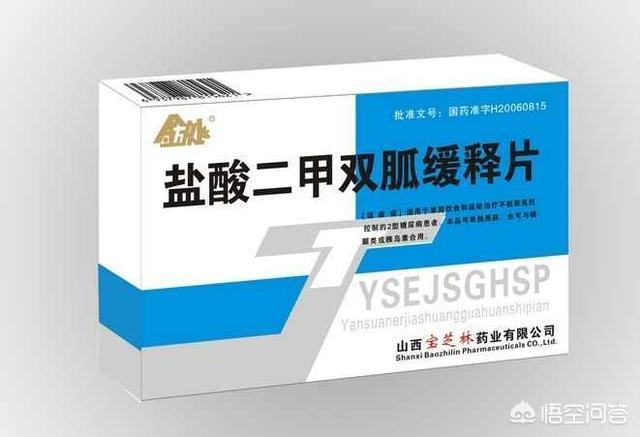
(4) Thiazolidinediones (glitazones): known as insulin sensitizers, significantly reduce insulin resistance. Two preparations are commonly used: rosiglitazone, pioglitazone.
(5) α-glucosidase inhibitors: can delay carbohydrate absorption and reduce postprandial hyperglycemia. Two preparations are commonly used: acarbose and voglibose.
(6) Insulin: according to the rapidity of onset of action and maintenance time, it can be divided into three categories: short (rapid) effect, intermediate effect and long (slow) effect.
2. Prescription Chinese medicines
Hypoglycemic Capsules, drug composition: ginseng, Chinese yam, gypsum, Zhimu, Astragalus, smallpox pollen, Poria, maitake, rhubarb, geoderma lucidum, corn husk, Cornus officinalis, licorice. Pharmacological Actions: Mainly has the effect of lowering blood sugar. Functions: Benefiting qi, nourishing yin, and promoting the production of fluids. Used for diabetes mellitus with deficiency of both qi and yin. Clinical application: For diabetes mellitus caused by deficiency of qi and yin.

Second, diabetes diet treatment 10 golden rules
1. Control total daily calorie intake to achieve or maintain ideal body weight.
2. Balanced meals.
3. Diversify food choices, with cereals as the foundation.
4. Limit fat intake.
5. Choose high-quality protein in moderation.
6. Avoid consuming glucose, sucrose, honey and its products (all kinds of candies, sweet cakes and cookies, ice cream, sugary drinks, etc.).
7. High-fiber diets, promoting the consumption of green leafy vegetables, beans, tubers, coarse grains, and fruits with low sugar content.

8. Reduce salt intake to less than 10g/day.
9. Adhere to small, frequent, regular, measured and fixed meals.
10. Drink plenty of water and limit alcohol consumption.
★ If this answer is helpful, please like and support it!
Diabetes mellitus is the most common chronic disease, and its treatment is also a place of concern. Under the current medical conditions, there is no cure for diabetes mellitus, so once diagnosed, it is necessary to actively standardize medical treatment, and carry out regular treatment under the guidance of the doctor in order to stably control the blood glucose, reduce the occurrence of complications, improve the quality of life, and improve the prognosis.

The treatment of diabetes requires comprehensive interventions, and the current classic protocol is summarized as a "quintet" that includes diabetes education, diet, exercise, medications, and testing, as follows:
1、Education: There are many diabetic patients in our country, but Xu everyone's knowledge of diabetes is generally insufficient, so it is necessary to strengthen the education and improve the understanding of diabetes in order to strengthen the cooperation of everyone and improve the quality of adherence and the effect of treatment.
2, diet: diet is the most closely related to our lives, but also the most difficult to do, a good diet is essential for the treatment of diabetes, diabetic diet should pay attention to balanced nutrition, reasonable combination, three meals should be timed and quantitative, to strictly control the total daily calories, to eat more fresh vegetables, eat less high glycemic index food.
3, exercise: diabetic patients should pay attention to appropriate exercise, adherence to exercise is very important for blood glucose control, exercise should be aerobic exercise based on gradual and orderly progress, avoid strenuous exercise.

4, drugs: diabetic patients should be under the guidance of a doctor to rationalize the use of drugs, drugs should be individualized, if necessary, insulin replacement therapy can be used.
5, monitoring: diabetic patients in the regular treatment at the same time, but also pay attention to monitoring the blood glucose level changes, and according to the blood glucose level to adjust the treatment program.
This article is answered by General Practice Sweeper, we hope that it will be helpful to you, copyright ©️, reproduced with permission. Please correct any deficiencies. The article is for reference only and is not intended as medical advice or medical guidance.
Diabetes is difficult to describe simply, and the more you know about diabetes the more you are afraid to answer easily. To get diabetes under control, let's start by understanding blood sugar metabolism:
People ingest starch, fruits and vegetables and other foods, through the digestive system into glucose into the blood, transported to the cells throughout the body, as a source of energy. If it is not consumed for a while, it is converted into glycogen and stored in the liver and muscles, and the liver can store 70 to 120 grams of sugar, accounting for about 6 to 10% of the liver weight. Cells can store liver sugar is limited, if the intake of sugar is too much, the excess sugar that is transformed into fat.
In addition, the increased secretion of adrenaline during the stress response is bound to cause a rise in blood glucose. Adrenaline promotes the breakdown and fermentation of glycogen, thus increasing blood glucose and lactic acid in the blood, which is due to the activation of phosphorylase enzymes in the liver and muscles by adrenaline.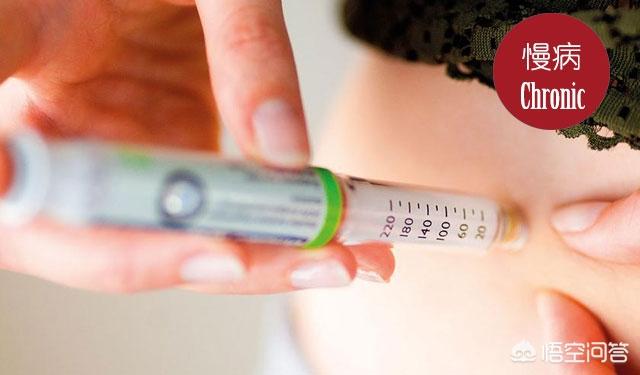
Diabetes is a very complex metabolic condition, there are differences in carbohydrate, fat, protein diets, types of hypoglycemic drugs and glucose-lowering mechanisms, the amount of exercise, insulin, glucagon, exogenous insulin use, insulin resistance, hypoglycemia, diabetes, complications, adrenal gland hormones, thyroid hormones, stress, dusk phenomenon, dawn phenomenon and so on and so forth, the number of factors affecting blood glucose is as many as the most professional doctors often feel overwhelmed. Even the most specialized doctors are often overwhelmed by the number of factors that affect blood sugar.
The current management of diabetes is extremely confusing, there is no strict diet plan, nor is there a nutritional correction program, even if the diabetes five horse-drawn cart, which is often talked about, is still a crude feeling better than nothing. In my opinion, each person's condition is different, different physique, a variety of diets, medications, exercise and other conditions are not the same, the need for one-on-one targeting of the full range of health regulation, generalized talk about eating less and more frequent meals, moderate exercise are not reasonable.

Perhaps the only thing that can be said at present is to eat less of the fast-glycemic foods such as rice porridge, bread, bananas, jujubes and other foods, rice for brown rice, noodles for buckwheat noodles, these slow-glycemic foods. (Note that refer to the food glycemic table, the higher the GI represents the faster the glycemic)
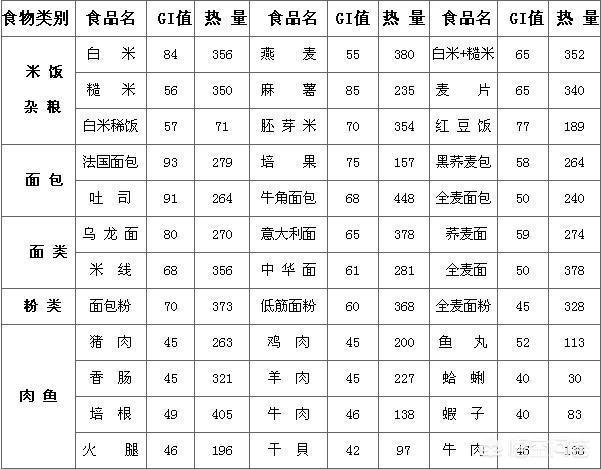
Strict abstinence from alcohol, followed by good blood sugar testing.
It is not convenient to give exercise instructions because you do not know the specific medication you are taking or your physical condition.
Vista's 150 Answers on Wukong Q&A
This question and answer are from the site users, does not represent the position of the site, such as infringement, please contact the administrator to delete.